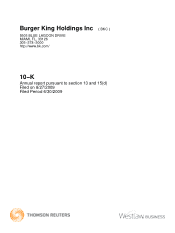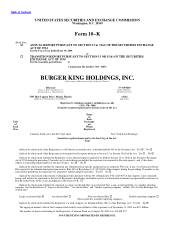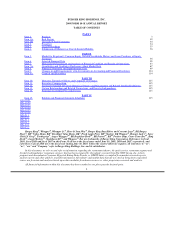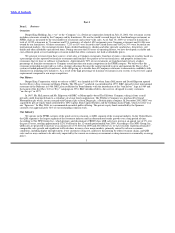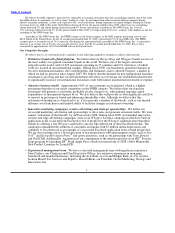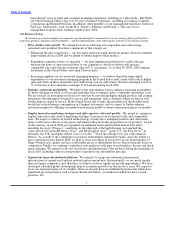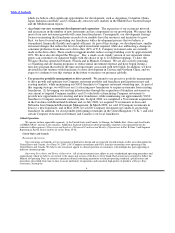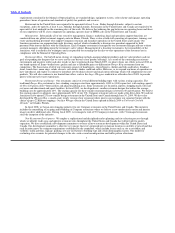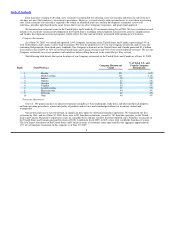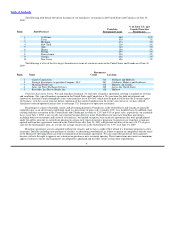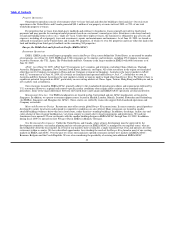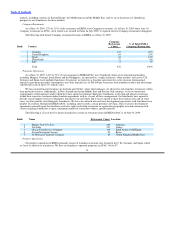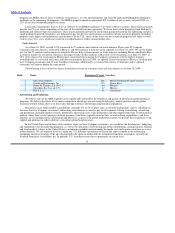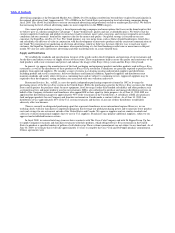Burger King 2009 Annual Report Download - page 5
Download and view the complete annual report
Please find page 5 of the 2009 Burger King annual report below. You can navigate through the pages in the report by either clicking on the pages listed below, or by using the keyword search tool below to find specific information within the annual report.
Table of Contents
Part I
Item 1. Business
Overview
Burger King Holdings, Inc. (“we” or the “Company”) is a Delaware corporation formed on July 23, 2002. Our restaurant system
includes restaurants owned by the Company and by franchisees. We are the world’s second largest fast food hamburger restaurant, or
FFHR, chain as measured by the total number of restaurants and system−wide sales. As of June 30, 2009, we owned or franchised a
total of 11,925 restaurants in 73 countries and U.S. territories, of which 1,429 restaurants were Company restaurants and 10,496 were
owned by our franchisees. Of these restaurants, 7,233 or 61% were located in the United States and 4,692 or 39% were located in our
international markets. Our restaurants feature flame−broiled hamburgers, chicken and other specialty sandwiches, french fries, soft
drinks and other affordably−priced food items. During our more than 50 years of operating history, we have developed a scalable and
cost−efficient quick service hamburger restaurant model that offers customers fast food at affordable prices.
We generate revenues from three sources: retail sales at Company restaurants; franchise revenues, consisting of royalties based on
a percentage of sales reported by franchise restaurants and franchise fees paid to us by our franchisees; and property income from
restaurants that we lease or sublease to franchisees. Approximately 90% of our restaurants are franchised and we have a higher
percentage of franchise restaurants to Company restaurants than our major competitors in the FFHR category. We believe that this
restaurant ownership mix provides us with a strategic advantage because the capital required to grow and maintain the Burger King ®
system is funded primarily by franchisees, while still giving us a sizeable base of Company restaurants to demonstrate credibility with
franchisees in launching new initiatives. As a result of the high percentage of franchise restaurants in our system, we have lower capital
requirements compared to our major competitors.
Our History
Burger King Corporation, which we refer to as BKC, was founded in 1954 when James McLamore and David Edgerton opened
the first Burger King restaurant in Miami, Florida. The Whopper® sandwich was introduced in 1957. BKC opened its first international
restaurant in the Bahamas in 1966. BKC also established its brand identity with the introduction of the “bun halves” logo in 1969 and
the launch of the first Have It Your Way® campaign in 1974. BKC introduced drive−thru service, designed to satisfy customers
“on−the−go” in 1975.
In 1967, Mr. McLamore and Mr. Edgerton sold BKC to Minneapolis−based The Pillsbury Company, taking it from a small
privately−held franchised chain to a subsidiary of a large food conglomerate. The Pillsbury Company was purchased by Grand
Metropolitan plc which, in turn, merged with Guinness plc to form Diageo plc, a British spirits company. In December 2002, BKC was
acquired by private equity funds controlled by TPG Capital, Bain Capital Partners and the Goldman Sachs Funds, which we refer to as
our “Sponsors.” In May 2006, we consummated our initial public offering. The private equity funds controlled by the Sponsors
currently own approximately 32% of our outstanding common stock.
Our Industry
We operate in the FFHR category of the quick service restaurant, or QSR, segment of the restaurant industry. In the United States,
the QSR segment is the largest segment of the restaurant industry and has demonstrated steady growth over a long period of time.
According to The NPD Group, Inc., which prepares and disseminates CREST data, QSR sales have grown at an annual rate of 3% over
the past 10 years, totaling approximately $231.4 billion for the 12−month period ended June 2009. According to The NPD Group, Inc.,
QSR sales are projected to increase at an annual rate of 3% between 2009 and 2014. However, we have recently experienced negative
comparable sales growth and significant traffic declines in many of our major markets, primarily caused by adverse economic
conditions, including higher unemployment, fewer customers eating out, and heavy discounting by other restaurant chains, and QSR
sales and we may continue to be adversely impacted by the current recessionary environment or sharp increases in commodity or energy
prices.
3

